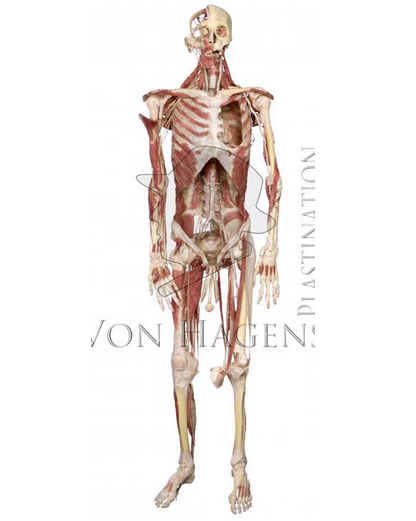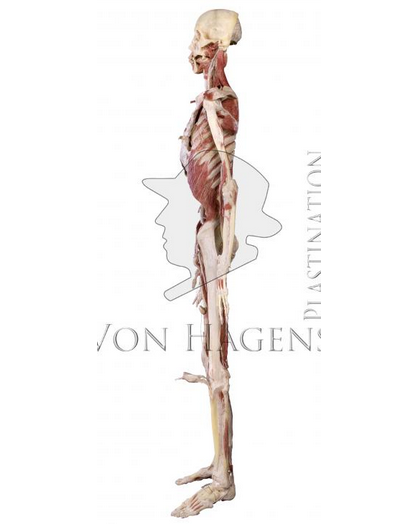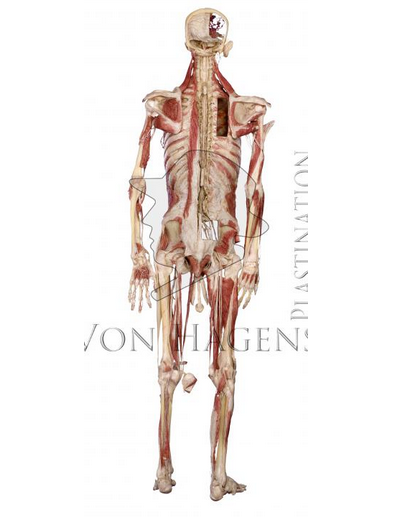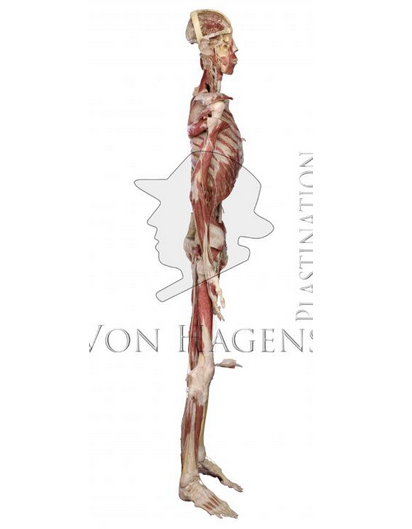The concept of body 4 is to present the somatic nervous system and the circulatory system. In order to expose the deepest layers and structures of the body, it is necessary to remove a large portion of the muscles. Each side of the body will represent a different anatomical design by use of specific dissection methods.
1. Head and Neck
- Dissection of the arteries and nerves, as well as the following areas: orbita, external and middle ear, deep facial region, oral diaphragm and tongue, and organs of the neck
- The cranial cavity is opened to display the brain stem and cranial nerves, and the arches of vertebras along the vertebral column are removed to expose the spinal cord
2. Thorax, Abdomen and Pelvis
- A window in the chest is created to reveal the heart, along with the thoracic part of the aorta and its branches
- Partial removal of the abdominal wall allows the arteries and nerves of the abdomen and pelvis to be observed
- The main organs and structures of the small pelvis are displayed
3. Extremities
- On one side, deep muscles and main joints with their ligaments and peripheral nerves are exposed, the other side shows deep and combined muscular dissection with arteries; the larger joints are opened
Silicone Plastinates are plastinated specimens from real human bodies. They include almost every body part from organs and nerve systems to whole body specimen.
Silicone Plastinates have a high didactical value and are particularly suitable for universities and museums. Their unique three-dimensional complexity illustrates the intricate structure of the musculoskeletal system and the inner organs as well as their relative position to each other. These specimens keep their natural form and thus allow students and professionals to examine structures and details of the body better than any model.
More than 400 teaching institutions around the world use plastinated specimens for teaching.
Silicone Plastinates are odorless and not harmful to health even when handling without gloves. They are durable, flexible, authentic, do not shrink. Anatomy specialists dissect our specimen with painstaking detail and anatomical precision to assure accuracy and highest quality.
All Plastinates are produced in Germany, near Berlin. Each Plastinate is handmade and produced under strict ethical guidelines.





